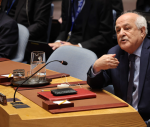You are here
Donald Trump’s normal fed
May 06,2018 - Last updated at May 06,2018
CAMBRIDGE — In a presidency that has shown little regard for conventional institutional norms, how can one explain Donald Trump’s completely reasonable appointments to the Federal Reserve Board? The most recent nominations, Columbia professor Richard Clarida and Michelle Bowman, the bank commissioner for the state of Kansas, continue a pattern of choosing seasoned technocrats, beginning, most importantly, with Jerome Powell, the new Fed chair.
If Trump were a normal president, appointing highly regarded individuals who can ensure effective policymaking would be business as usual. But here is a president who has often chosen officials with little government experience, and then seems to task them with creating the most disruption possible in the departments they are selected to run. Yet, for the Fed, the author of The Art of the Deal has nominated as vice chair an academic (Clarida) whose most famous paper is entitled “The Science of Monetary Policy”.
All right, you might say, giving Trump credit for maintaining stability at the Fed is like giving high marks for not starting a nuclear war. The idea of central-bank independence has gained enormous traction over the past 30 years among politicians worldwide. Not only is it the norm in democracies such as the United States, the eurozone and Japan, but even strongman leaders like Russian President Vladimir Putin and Hungarian Prime Minister Viktor Orbán pause long and hard before challenging their central banks.
But people forget just how new the idea of central-bank independence really is. The venerable Bank of England gained monetary independence only 20 years ago. Back in the early 1980s, when I wrote an academic paper making the case for independence as a tool to establish central banks’ anti-inflation credibility, one journal after another rejected it. The referees scoffed at the idea that independence could be more than a meaningless façade, easily pierced by the government.
Which brings us back to Trump. Is he just pausing long and hard before pressing the Fed to stoke the economy ahead of the 2020 election, and ultimately to monetise the massive deficits wrought by Republican tax cuts? If that is his plan — and who really believes a cornered Trump would not resort to high inflation? — the good news is that his Fed appointments will not make his life easy.
Trump does appear to understand this. After all, on the campaign trail in 2016, he himself railed against Powell’s predecessor, Janet Yellen, for allegedly holding down interest rates to facilitate Hillary Clinton’s election. Now as president, that is exactly what he would like to see in 2020. Interviewing candidates to succeed Yellen last year, he supposedly asked just one key question: “You are not going to raise interest rates and ruin my beautiful stock market, are you?”
True, Trump is somewhat constrained by the need to win Senate approval of his nominations. In fact, some conservative Republicans have objected to another of his appointments, Marvin Goodfriend of Carnegie Mellon University, for daring to suggest that the Fed might need a new approach to monetary policy, negative interest rates, to confront the next very deep recession or financial crisis. And although someday the Fed will almost surely embrace this advice, I have also published on the issue, Goodfriend’s nomination barely survived the US Senate Banking Committee. But, by and large, the Senate has given Trump what he wants, and many Republicans would have embraced a disrupter — for example, a disciple of Ron “End the Fed” Paul, or another conservative preaching a return to the pre-World War I gold standard.
Unfortunately, the battle for the Fed’s independence is far from over. Trump may just be keeping his powder dry until a real conflict erupts. Right now, the Fed’s planned interest-rate hikes are largely prophylactic. Inflation is rising only very slowly, even as the economy seems to be running red-hot. But the moment of reckoning could still come. And, assuming that Trump stays healthy, avoids impeachment, and runs again, the last thing he would want in 2019 and 2020 is sharply higher interest rates, an untimely rise in unemployment, and a likely price collapse in his beautiful stock market.
In a crunch, the Fed’s much-vaunted independence could prove more fragile than most people realise. It is not enshrined in the US Constitution, and the president and Congress maintain several levers of control. An act of Congress created the Fed in 1913, and in principle Congress could revamp it, say, by greatly increasing congressional oversight, or by starving it of funding. Indeed, from time to time bills have floated around Congress that would have done just that.
For now, Fed appointees have been treated almost as well as generals in the Trump universe. True, with ballooning deficits and the approach of the 2020 election campaign, testing times lie ahead. But for now, let’s acknowledge that this is one area where the Trump presidency has been almost normal, so far.
Kenneth Rogoff, a former chief economist of the IMF, is professor of economics and public policy at Harvard University. Copyright: Project Syndicate, 2018. www.project-syndicate.org











